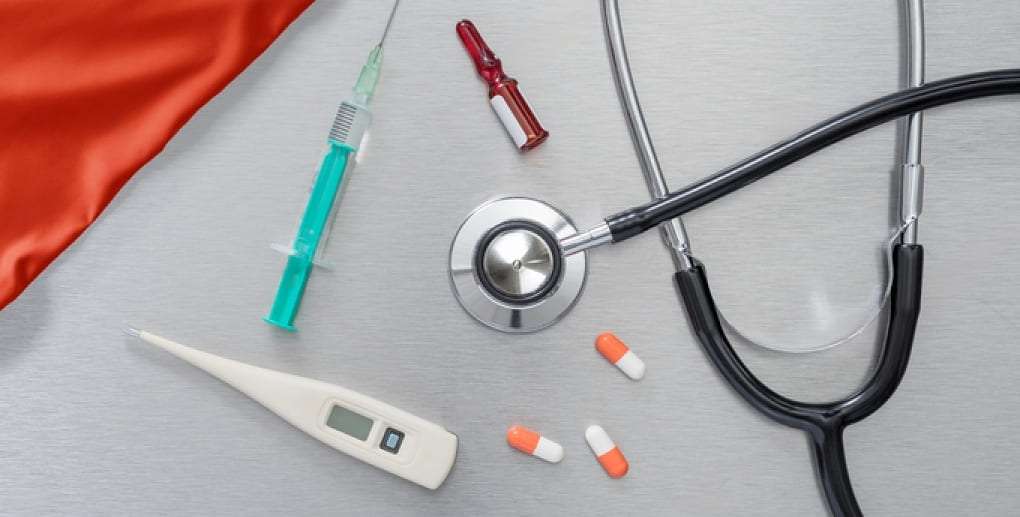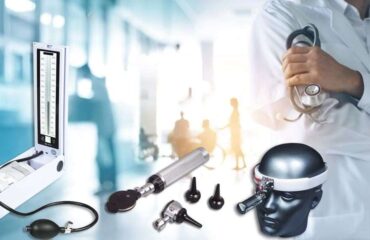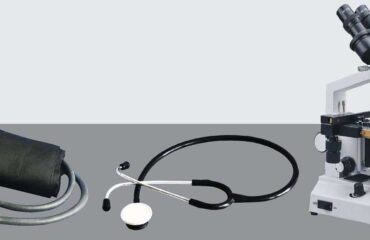Diagnostic medical devices are tools and instruments used by healthcare professionals to detect and diagnose diseases, conditions, or injuries in patients. These devices range from simple, non-invasive tools to complex, high-tech instruments and can be used in various medical settings, including hospitals, clinics, laboratories, and even at home.

Here are some examples and categories of diagnostic medical devices:
Categories and Examples:
Imaging Devices:
- X-ray Machines: Used to view the inside of the body, especially bones.
- Magnetic Resonance Imaging (MRI) Scanners: Provide detailed images of organs and tissues.
- Computed Tomography (CT) Scanners: Create cross-sectional images of the body.
- Ultrasound Machines: Use sound waves to create images of organs and structures inside the body.
- Mammography Units: Specialized X-ray machines for breast tissue imaging.
Electro Diagnostic product:
- Electrocardiogram (ECG or EKG) Machines: Record the electrical activity of the heart.
- Electroencephalogram (EEG) Machines: Monitor the electrical activity of the brain.
- Electromyography (EMG) Devices: Assess the health of muscles and the nerve cells that control them.
Endoscopic Devices:
- Endoscopes: Flexible tubes with a light and camera used to view the interior of a body cavity or organ.
- Colposcopes: Used for examining the cervix and vagina.
- Bronchoscopes: Used to look inside the airways.
Laboratory Diagnostic product:
- Blood Glucose Monitors: Laboratory Diagnostic product Measure blood sugar levels.
- Hematology Analyzers: Analyze blood samples for various components like red and white blood cells, hemoglobin, etc.
- Urinalysis Analyzers: Test urine samples for various substances.
Home Diagnostic product:
- Blood Pressure Monitors: Measure blood pressure.
- Pulse Oximeters: Pulse oximeters measure the oxygen level (oxygen saturation) of the blood.
- Pregnancy Tests: Detect the presence of the hormone hCG in urine.
Point-of-Care Testing Devices:
- Rapid Diagnostic Tests (RDTs): Provide quick results for conditions such as infections, metabolic diseases, and more.
- Portable Ultrasound Devices: Handheld devices for quick imaging.
Functions and Importance:
- Early Detection: These devices help in the early identification of diseases, which can lead to more effective treatment and better outcomes.
- Monitoring: Diagnostic products are crucial for monitoring chronic conditions and the effectiveness of treatments.
- Guiding Treatment Decisions: They provide vital information that helps in making informed decisions about patient care.
- Preventive Care: Some devices are used in screening programs to detect diseases in asymptomatic individuals, thereby aiding in preventive healthcare.
Regulatory and Quality Aspects:
Diagnostic medical devices are regulated by health authorities (like the FDA in the United States or the CE marking in the European Union) to ensure their safety, accuracy, and effectiveness. Quality control and proper calibration are essential to maintain the reliability of these devices.
Types of Diagnostic Medical Devices
Diagnostic medical products come in a wide range of types, each serving specific functions and applications in medical practice. Here’s a more detailed breakdown of the various types:
Imaging Devices
- X-ray Machines: Produce images of the internal structures of the body, primarily used for viewing bones and detecting fractures.
- Computed Tomography (CT) Scanners: Use X-rays to create detailed cross-sectional images of the body, useful for detecting tumors, internal bleeding, and other conditions.
- Magnetic Resonance Imaging (MRI) Scanners: Utilize strong magnetic fields and radio waves to generate detailed images of organs and tissues, particularly useful for soft tissue injuries and brain imaging.
- Ultrasound Machines: Employ sound waves to produce images of the inside of the body, commonly used in prenatal care, and to examine organs and blood flow.
- Mammography Units: Specialized X-ray devices designed for breast tissue imaging to detect breast cancer.
Electro Diagnostic product
- Electrocardiogram (ECG or EKG) Machines: Record the electrical activity of the heart to diagnose heart conditions.
- Electroencephalogram (EEG) Machines: Monitor the electrical activity of the brain to diagnose conditions like epilepsy and other neurological disorders.
- Electromyography (EMG) Devices: Assess the electrical activity produced by skeletal muscles to diagnose neuromuscular disorders.
Endoscopic Devices
- Endoscopes: Flexible tubes with cameras and lights used to visualize the interior of body cavities or organs. Types include:
- Gastroscopes: For examining the stomach and upper digestive tract.
- Colonoscope: For viewing the colon.
- Bronchoscopes: For examining the airways.
- Arthroscopes: For inspecting joint interiors.
Laboratory Diagnostic product
- Blood Glucose Monitors: Laboratory Diagnostic product Measure blood sugar levels, essential for diabetes management.
- Hematology Analyzers: Analyze blood samples for various parameters like red and white blood cell counts, hemoglobin levels, etc.
- Urinalysis Analyzers: Test urine samples for substances like glucose, proteins, and other indicators of disease.
- Biochemical Analyzers: Perform tests on blood, urine, and other bodily fluids to measure substances like enzymes, electrolytes, and hormones.
Home Diagnostic product
- Blood Pressure Monitors: Sphygmomanometer Devices for measuring blood pressure, often used by patients at home to monitor hypertension.
- Pulse Oximeters: Measure the oxygen saturation level of the blood, useful for patients with respiratory conditions.
- Pregnancy Tests: Detect the presence of human chorionic gonadotropin (hCG) hormone in urine to confirm pregnancy.
Point-of-Care Testing (POCT) Devices
- Rapid Diagnostic Tests (RDTs): Provide quick results for conditions such as infections (e.g., COVID-19, malaria), glucose levels, and more.
- Portable Ultrasound Devices: Handheld devices for quick and convenient imaging, often used in emergency settings.
Genetic Testing Devices
- PCR Machines (Polymerase Chain Reaction): Amplify DNA sequences to detect genetic material from pathogens or specific genetic markers in human DNA.
- Next-Generation Sequencing (NGS) Systems: Used for detailed genetic analysis, including the detection of genetic mutations and inherited conditions.
Specialized Diagnostic product
- Dermatoscopes: Used for examining skin lesions to detect skin cancers.
- Audiometers: Measure hearing acuity and diagnose hearing loss.
- Ophthalmoscopes: Used to examine the interior of the eyes.
Wearable Diagnostic product
- Holter Monitors: Portable ECG devices that record heart activity over 24-48 hours.
- Continuous Glucose Monitors (CGMs): Track glucose levels throughout the day and night for diabetes management.
- Fitness Trackers: Monitor physical activity, heart rate, and other health metrics.
Regulatory and Quality Control:
Diagnostic medical devices are subject to stringent regulations to ensure their safety, accuracy, and reliability. Organizations such as the FDA (U.S. Food and Drug Administration) and the European Medicines Agency (EMA) oversee these devices’ approval and quality standards.
Benefit of Diagnostic Medical Devices in medical industry
Diagnostic medical products offer numerous benefits in the medical industry, enhancing patient care, improving outcomes, and streamlining healthcare processes. Here are some key benefits:
Early Detection and Diagnosis
- Timely Intervention: Early detection of diseases such as cancer, heart disease, and diabetes allows for timely intervention, which can significantly improve patient outcomes.
- Preventive Care: Screening programs using Diagnostic product can identify risk factors and early signs of diseases, enabling preventive measures and lifestyle changes.
Accurate Diagnosis
- Precision: Advanced imaging and laboratory devices provide highly accurate and detailed information, reducing the likelihood of misdiagnosis.
- Comprehensive Analysis: Devices like MRI and CT scanners offer comprehensive views of the body’s internal structures, aiding in complex diagnoses.
Monitoring Chronic Conditions
- Continuous Monitoring: Devices such as continuous glucose monitors (CGMs) and wearable ECG monitors allow for ongoing monitoring of chronic conditions, helping to manage diseases more effectively.
- Patient Self-Management: Home Diagnostic product enable patients to monitor their health, manage chronic conditions, and adhere to treatment plans.
Guiding Treatment Decisions
- Personalized Treatment: Diagnostic product help tailor treatments to individual patient needs by providing detailed information about the specific condition and its severity.
- Treatment Efficacy: Regular monitoring with Diagnostic product allows healthcare providers to assess the effectiveness of treatments and make necessary adjustments.
Improving Patient Outcomes
- Enhanced Recovery: Accurate diagnostics can lead to more effective treatments, faster recovery times, and improved overall patient health.
- Reduced Complications: Early and precise diagnosis can help prevent complications and reduce the need for more invasive procedures.
Cost Efficiency
- Reduced Healthcare Costs: Early detection and accurate diagnosis can reduce healthcare costs by minimizing the need for extensive treatments, hospitalizations, and emergency interventions.
- Efficient Resource Use: Diagnostic product help allocate healthcare resources more efficiently, ensuring that patients receive appropriate care at the right time.
Advancing Medical Research
- Data Collection: Diagnostic product generate valuable data that can be used in medical research to improve understanding of diseases and develop new treatments.
- Innovation: Continuous advancements in diagnostic technology drive innovation in medical research and healthcare practices.
Enhancing Patient Safety
- Non-Invasive Methods: Many modern Diagnostic product offer non-invasive or minimally invasive options, reducing the risk associated with diagnostic procedures.
- Reduced Errors: Automated and precise diagnostic tools reduce human error, enhancing patient safety.
Facilitating Remote and Telehealth Services
- Remote Monitoring: Wearable and portable Diagnostic product enable remote monitoring, which is particularly valuable for patients in rural or underserved areas.
- Telemedicine Integration: Diagnostic product can be integrated with telehealth services, allowing healthcare providers to diagnose and monitor patients remotely.
Supporting Public Health Initiatives
- Disease Surveillance: Diagnostic product play a critical role in tracking and controlling outbreaks of infectious diseases by enabling rapid and accurate diagnosis.
- Health Screenings: Public health screening programs rely on Diagnostic product to identify and manage health issues within populations.
In summary, diagnostic medical devices are pivotal in modern healthcare, offering numerous benefits that enhance patient care, improve clinical outcomes, and contribute to the efficiency and effectiveness of the medical industry. Their role in early detection, accurate diagnosis, chronic disease management, and support for telehealth services underscores their importance in advancing healthcare delivery.

